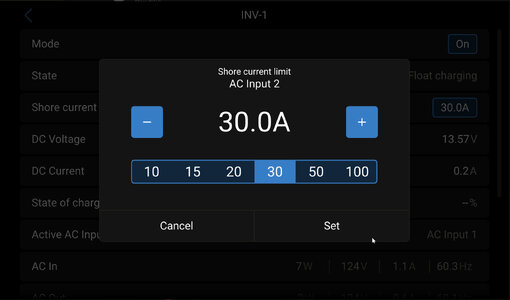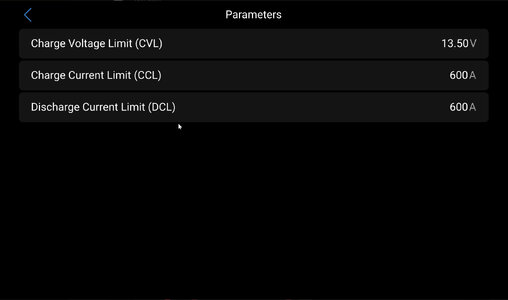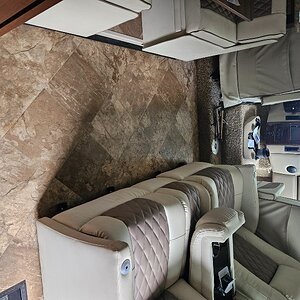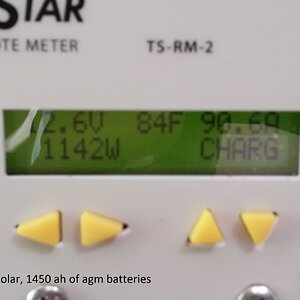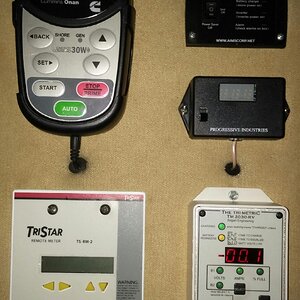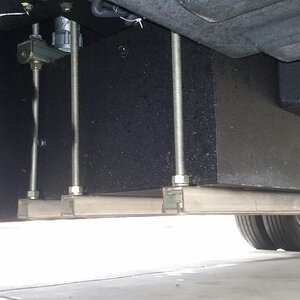Let's take a step back. Many of us, self included (guilty as charged) have Magnum on the brain.
@Joe Hogan has Victron as do I. Modern inverters such as Victron are "smart" inverters and adjust charge rates, etc. as needed. The term "max charge rate" is a Magnum term, that is not present in Victron. Victron's inverter has you enter the shore current limit - i.e. what is the size of your input you're connected to. If connected to a 50A pedestal, this can be set to 50A, if GEN (for me) then 30A, if connected to a 120V/15A plug then 15A. It has nothing to do with charge rate. There is no setting for such that I can find via the Cerbo GX, I'd have to check the BMS, etc. via Bluetooth to see more settings available.
From the Victron manual, the charge rate is taken from the surplus after the loads are met:
PowerControl – maximum use of limited shore current The MultiPlus can supply a huge charging current. This implies heavy loading of the shore connection or generator set. Therefore a maximum current can be set. The MultiPlus then takes other power users into account, and only uses 'surplus' current for charging purposes.
The parameters screenshot below is not settable, it's per the BMS as limits per type of battery. It doesn't mean this is a max charge rate or anything of the like of Magnum.
As to running on GEN the Cerbo GX new UI has great info and can show you the watts in, watts out, etc. You can look at the detail of supply and demand easily. Also VRM has numerous charts you can use and learn how it works and manages the loads, charging, etc.
Cerbo GX firmware 3.54 as of this posting:
